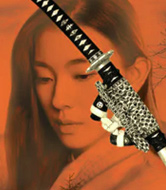Lian Hearn's TALES OF THE OTORI sold over 4 million copies worldwide. Now she brings us a story about storytelling, and about love, intrigue and betrayal.

Sei is a storyteller. It's 1884 in Tokyo, and for fifty years he has been a master of his art, but now he is starting to wonder if the new world has left him behind. Momentous changes are taking place, and everyone is looking for novelty and excitement.
Just when he thinks he will never write again, his own life and the lives of the people around him begin to spiral providing the inspiration for the greatest story he has ever told. A story of love, jealousy, intrigue, and betrayal.
At home his daughters' marriages are falling apart, and coming back together again, and in his neighbourhood, he bears witness to a love entanglement so strange and threatening not even his audiences will believe it.
Set against the backdrop of Japan's first incursions into Korea and a changing political landscape, Sei offers wise and witty reflections on the perils and delights of storytelling, its lies and, ultimately, its truth.
Lian Hearn writes...
Some characters came into my head: a former samurai who is caught between the old world and the new, a young woman medical student (Michi, who is a child in Blossoms and Shadows), a boy from Korea, beautiful and mad about kabuki, a silk producer’s son who has spent seven years in France and loves all things French. Set in Japan in the 1880s and 1890s the relations and interactions between these four take place against the background of the growing demand for People’s Rights and the tensions between Japan and Korea, leading to the murder of the Korean queen.
What was going on these years that saw the restoration and deification of the Imperial system, the growth of militarism, the establishment of so many traditions that we think of as synonomous with old Japan, at the same time as the true old way of life was disappearing forever, and the rapidity of change was causing a national nervous breakdown?
As usual when I am researching a story and mulling it over, ideas and images come from many different sources. On one trip to Tokyo I found a book in Kinokuniya of woodblock prints in the 1880s showing the use of propaganda to influence public opinion in Japan, particularly in attitudes towards Korea and China.
Elsewhere I read about the Emperor attending a kabuki performance.
There was a long discussion on the samurai-archives forum of a Japanese conspiracy theory that the Meiji Emperor was not Emperor Komei’s son, but a substitute.
I came across an article about an English storyteller in Tokyo, Henry Black.
I thought about the problems of translating Western literature: novels, essays, politics and philosophy, into Japanese.
I read books on changing attitudes to sexuality and gender, notably Jim Reichert’s In the Company of Men and Recreating Japanese Men, edited by Sabine Fruhstuck and Anne Walthall.
I read books on the new Meiji Literature, especially about Higuchi Ichiyo and other women writers, and An Age of Melodrama by Ken K Ito.
And then while I was struggling to find a way to fit all this into a novel, a voice came to me, as though engaging me in an intimate conversation. I stopped trying to mould all my ingredients into shape and listened to Akabane Sei, the storyteller, a man as hopelessly addicted to all forms of story as I am.
Author’s note
When researching the background for this novel, set in 1884, I was inspired by the outburst in all forms of writing and storytelling that took place when literature from Western sources met the Japanese tradition.
Early Meiji period novels used a form similar to a stage play for dialogue. Sei uses this same form to record conversations, and I have used it in the novel.
Sei’s melodrama, The Silk Kimono, is perhaps a forerunner to the great Meiji melodrama, The Golden Demon (Konjiki Yasha) by Ozaki Kôyô
The inspiration for Jack Green came from the English story teller, Henry Black.
Pp 2 and 9: Among Jack Green’s stories are adaptions of Jason and the Argonauts, Medusa, Oliver Twist, David Copperfield, Bleak House and A Tale of Two Cities.
P9: The Eight Dog Chronicles by Kyokutei Bakin was a huge and immensely popular historical novel which appeared in the first half of the 19th century.
If Sei had written I Am a Dog he might have had the same success that Natsume Sôseki achieved with a satirical novel I am a Cat, written in 1905-6
P12: Sei might perhaps be thinking of The Humble Man’s Bobbin, an anonymous work about two Satsuma warriors that gained widespread circulation in the Meiji period
P66: Satoshi’s French novels are Les Miserables and The Count of Monte Cristo,
The Baudelaire poem is L’Invitation au Voyage -Mon enfant, ma soeur, Songe à la douceur. D'aller là-bas vivre ensemble! Aimer à loisir, Aimer et mourir. Au pays qui te ressemble! (translated by LH)
Shigure’s stories are inspired by Higuchi Ichiyô and other Meiji women writers
P96: The Guy De Maupassant stories are Boule de Suif and Deux Amis
P153: Shibahama and The God of Death can be found in Tatsumi Yoshiro’s Fallen Words. Tensa’s other tales are traditional rakugo tales. His final story is invented.
P165: The Little Sparrow appears as The Sparrow’s Gifts in Royall Tyler’s Japanese Tales
P166: The old man’s stories are based on tales from Legends of Tono by Kunio Yanagita
P 200: Jack Green’s final stories are Treasure Island, Robin Hood and Vice Versa
The kabuki plays, Osaka Castle and Hideyoshi’s Invasion, are both invented, as is The History of a Nose.
I would like to thank Randy Schadel, Carmel Sterba and Gay Lynch for reading the manuscript for me, and for their suggestions and corrections.




